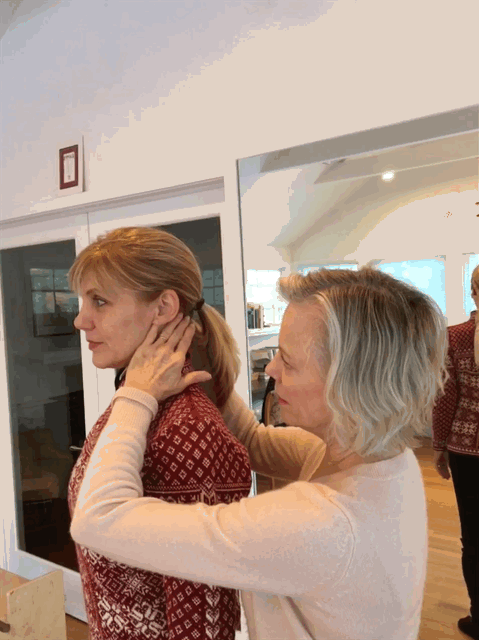Yea, clueless was liberating.
I was spending so much time trying to be right with my posture that I soon realized that my idea of right was all ‘wrong’. So what’s better than assuming that there is a right to get to? Be clueless! Or as the dictionary defines it: having no knowledge, understanding, or ability. That emptied all my pre-conceived notions! At least, temporarily however……
My assumptions about the muscular components for movement needed to shift. And I found that shift with my first Alexander teacher, Pamela Anderson.
Pamela instructed me to ponder not what was muscularly right (habit) but what was free –less muscularly engaged – and light (a healthier habit ). Freedom from muscular contraction was massively difficult after working so hard for so long in my dancing career. If I wasn’t doing something muscular throughout my whole body, what was I doing? This applied to both dancing and the daily, more pedestrian ways of moving.
It turned out that knowing the structure of my skeleton was one of the pieces of information I was missing. Then, learning to use my body in a way that honored that structure. And then allowing my mind and my body to be blank so that a new learning could take place, preventing the old inefficiencies from taking over. Those pesky, comfortable yet unwanted habits run deep.
Here’s what Pamela said in an interview about her own first lesson:
At my first lesson, I was touched and taught in a way I had never felt before. Instead of manipulating my body into some contorted form to be able to “dance,” I was gently coaxed to discover my own unique structure and mechanics. I felt who I was inside, which I had been tightening and trying to force into some distortion of the right way to be and move. Plus I was learning how structurally I was designed to function. It felt so good!!!
As I was taught by my first teacher, I am honored to pass on these life changing, comfort inducing experiences onto my students. Click here to watch me working with my student Erin Marie Akin.
Watch for my workshop in September! I will be sending an outline in my next post.
If you want to find out more, book a lesson with me, either on Zoom or if you are in the NY/NJ area at my studio in Montclair, NJ. Please use my contact form, tell me about yourself and leave your availability. I will respond within 24 hours.
If you know others who may benefit from reading my blog, please forward.









 Getting ready for a competition is l
Getting ready for a competition is l If we take beauty as a constant, describing everything from flowers to trees to faces to dancing, we may wonder if beauty is really a distilling down, a reduction of add-ons, encumbrances and wasted effort.
If we take beauty as a constant, describing everything from flowers to trees to faces to dancing, we may wonder if beauty is really a distilling down, a reduction of add-ons, encumbrances and wasted effort.
Comments
One tiny tweak that can make your posture stand out and win you competitions — No Comments